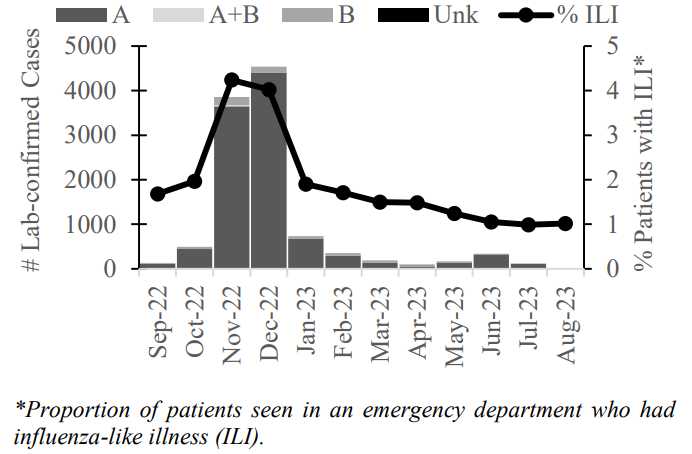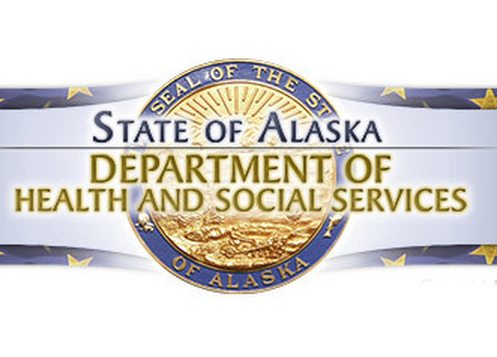As of April 4, 2013, Chinese public health officials have reported 14 cases of human infection with a novel avian influenza A (H7N9) virus from four different provinces in China. All patients were hospitalized with severe respiratory illness, and six persons have died.
These are the first human infections identified with an avian influenza A (H7N9) virus infection. Six cases are from Shanghai, one is from Anhui Province, four are from Jiangsu Province, and three are from Zhejiang Province. Thirteen cases are in adults aged 27 through 87 years, and one case is in a child aged 4 years; all cases had illness onset from February 19 through March 31, 2013. No person-to-person transmission or epidemiologic link between any of the cases has been identified. We are aware of reports of possible sources of infection but these have not been confirmed. We are investigating and will provide that information when it is available.
Preliminary functional data of the isolated viruses from the first 3 cases suggest that they are likely susceptible to neuraminidase inhibitors. Investigations by Chinese public health officials are ongoing.
These cases are a reminder that novel A influenza viruses can infect and cause severe respiratory illness in humans. Novel influenza A viruses are influenza viruses that are different from currently circulating human influenza A virus subtypes and include influenza viruses from predominantly avian and swine origin. In recent years, human infections with highly pathogenic avian influenza A (H5N1) virus in several Asian countries and Egypt, highly pathogenic avian influenza A (H7N3) virus in Mexico, and variant influenza A (H3N2)v viruses in the United States have been reported (https://www.cdc.gov/mmwr/preview/mmwrhtml/mm6136a4.htm, https://www.who.int/influenza/human_animal_interface/EN_GIP_20130312CumulativeNumberH5N1cases.pdf, https://emergency.cdc.gov/HAN/han00325.asp). The clinical presentation of human infection with avian influenza A viruses varies considerably–from mild illness, including conjunctivitis, fever, and cough, to severe illness, including fulminant pneumonia leading to death in cases of H5N1 and in these recent cases of H7N9 virus infections. To date there has been no evidence of person-to-person transmission of influenza A (H7N9) viruses.
At this time, no cases of human infection with avian influenza A (H7N9) viruses have been detected in the United States. Rapid detection and characterization of novel influenza viruses remain a critical component of national efforts to prevent further cases, evaluate clinical illness associated with them, and assess any ability for these viruses to spread among humans. As a result, clinicians are reminded to consider influenza as a possible diagnosis when evaluating patients with acute respiratory illnesses, including pneumonia, even outside of the typical influenza season.
Clinicians should consider the possibility of novel influenza A (H7N9) virus infection in persons with respiratory illness and an appropriate travel or exposure history. Although the majority of novel influenza A (H7N9) cases have resulted in severe respiratory illness in adults, infection with this virus may cause mild illness in some and may cause illness in children as well. When performing influenza diagnostic testing in patients with respiratory illness for whom an etiology has not been confirmed, clinicians may identify human cases of avian influenza A virus infection or new cases of variant influenza in the United States. Patients with novel influenza A (H7N9) virus infections should have a positive test result for influenza A virus via reverse-transcription polymerase chain reaction (RT-PCR) testing but be unsubtypeable.
Suspected infections with novel influenza A (H7N9) viruses in the United States should be reported to CDC within 24 hours of initial detection, and state health departments should notify CDC promptly of all patients under investigation for possible novel influenza A virus infection.
Interim Recommendations for Clinicians and State and Local Health Departments
Case Investigation and Testing
- Patients with illness compatible with influenza who also meet either of the exposure criteria below should be candidates for RT-PCR testing for influenza. Decisions about diagnostic testing for influenza using RT-PCR should be made using available clinical and epidemiologic information, and additional persons in whom clinicians suspect influenza A (H7N9) virus infection may also be tested.
i. Patients with recent travel to countries where human cases of novel influenza A (H7N9) virus infection have recentlybeen detected, especially if there was recent direct or close contact with animals (such as wild birds, poultry, or pigs) or where influenza A (H7N9) viruses are known to be circulating in animals. Currently, China is the only country that has recently reported novel influenza A (H7N9) human cases.
ii. Patients who have had recent contact with confirmed human cases of infection with novel influenza A (H7N9) virus.
- Clinicians should obtain a nasopharyngeal swab or aspirate from these patients, place the swab or aspirate in viral transport medium, and contact their state or local health department to arrange transport and request a timely diagnosis at a state public health laboratory or CDC. For additional guidance on diagnostic testing of patients under investigation for novel influenza A (H7N9) virus infection, please seeInterim Guidance for Laboratory Testing of Persons with Suspected Infection with Highly Pathogenic Avian Influenza A (H5N1) Virus in the United States at https://www.cdc.gov/flu/avianflu/guidance-labtesting.htm.
- If infection with influenza A (H7N9) virus is suspected based on current clinical and epidemiological screening criteria recommended by public health authorities, specimens should be collected with appropriate infection control precautions for novel virulent influenza viruses and sent to the state or local health department for testing. Viral culture should not be attempted in these cases.
- All unsubtypeable influenza A virus specimens should be submitted to CDC immediately for additional diagnostic testing. At this time, confirmatory testing for avian influenza A (H7N9) will be conducted at CDC.
- Commercially available rapid influenza diagnostic tests (RIDTs) may not detect avian or variant influenza A viruses in respiratory specimens. Therefore, a negative rapid influenza diagnostic test result does not exclude infection with influenza viruses. In addition, a positive test result for influenza A cannot confirm variant or avian influenza virus infection because these tests cannot distinguish between influenza A virus subtypes (they do not differentiate between human influenza A viruses and avian or variant viruses). Therefore, when RIDTs are positive for influenza A and there is concern for novel influenza A virus infection, respiratory specimens should be collected and sent for RT-PCR testing at a state public health laboratory. Clinical treatment decisions should not be made on the basis of a negative rapid influenza diagnostic test result since the test has only moderate sensitivity.
Infection Control
- Clinicians should be aware of appropriate infection control guidelines for patients under investigation for infection with novel influenza A viruses. Because it has been shown to cause severe respiratory illness in cases identified so far, healthcare personnel (HCP) caring for patients under investigation for novel influenza A (H7N9) virus infection should adhere to Standard Precautions plus Droplet, Contact, and Airborne Precautions, including eye protection, until more is known about the transmission characteristics of the A (H7N9) virus.
- All clusters of respiratory illness in HCP caring for patients with severe acute respiratory illness should be investigated.
Treatment
- For persons hospitalized with suspected influenza, including suspected novel H7N9 virus infection, clinicians should start empiric treatment with influenza antiviral medications (oral oseltamivir or inhaled zanamivir) as soon as possible, without waiting for laboratory confirmation.
- For high-risk persons (persons
- Antiviral treatment is most effective when started as soon as possible after influenza illness onset. Early initiation of treatment provides a more optimal clinical response, although treatment of moderate, severe, or progressive disease begun after 48 hours of symptoms may still provide benefit.
For More Information
- World Health Organization (WHO) “H7N9 avian influenza human infections in China” is available at https://www.who.int/csr/don/2013_04_01/en/index.html.
- CDC avian influenza A (H7N9) information page is available at https://www.cdc.gov/flu/avianflu/h7n9-virus.htm.
- WHO “Frequently Asked Questions on human infection with A (H7N9) virus, China” is available at https://www.who.int/influenza/human_animal_interface/faq_H7N9/en/index.html.
- The Chinese Center for Disease Control and Prevention “Questions and Answers about human infection with A (H7N9) avian influenza virus” is available athttps://www.chinacdc.cn/en/ne/201303/t20130331_79282.html.
- CDC general information about avian influenza viruses and how they spread is available at https://www.cdc.gov/flu/avianflu/avian-in-humans.htm .
- CDC “Interim Guidance on Case Definitions to be Used for Investigations of Influenza A (H3N2) Variant Virus Cases” for state and local health departments is available athttps://www.cdc.gov/flu/swineflu/case-definitions.htm.
- CDC “Prevention Strategies for Seasonal and Influenza A (H3N2)v in Health Care Settings” is available at https://www.cdc.gov/flu/swineflu/prevention-strategies.htm.
- CDC “Interim Guidance on Specimen Collection, Processing, and Testing for Patients with Suspected Influenza A (H3N2)v Virus Infection” for public health professionals is available at https://www.cdc.gov/flu/swineflu/h3n2v-testing.htm.
- CDC “Interim Guidance for Enhanced Influenza Surveillance: Additional Specimen Collection for Detection of Influenza A (H3N2) Variant Virus Infections” for state and local health departments is available at https://www.cdc.gov/flu/swineflu/h3n2v-surveillance.htm.
- National Association of State Public Health Veterinarians “Compendium of Measures to Prevent Disease Associated with Animals in Public Settings, 2011” is available as the first bulleted item at https://nasphv.org/documentsCompendiumAnimals.html .
The Centers for Disease Control and Prevention (CDC) protects people’s health and safety by preventing and controlling diseases and injuries; enhances health decisions by providing credible information on critical health issues; and promotes healthy living through strong partnerships with local, national, and international organizations.




